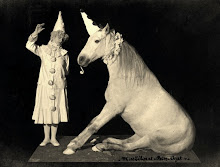German physiologist Franz Joseph Gall and the area of phrenology (which he referred to as 'cranioscopy') attempted to localize mental functioning by attributing personality traits and characteristics to the shape of the skull. Phrenology held that the shape of the cranial bone was indicative of certain areas of the brain being larger or smaller than others, and thus the corresponding traits being more or less prominent.

Localization was further validated by the case studies of French physician and anatomist Paul Broca, who found that ablation of certain areas of the brain are the cause of changes in mental processing and behaviour, for example, lesioning of the anterior lobes results in aphasia. This helped to localize the region of the brain associated with speech production, now known as Broca's area, in the inferior frontal gyrus (Wernicke's area, in the superior temporal gyrus, is also pointed out in the diagram below, as it is the region associated with language comprehension).

Experimental stimulation of the cerebral cortex helped increase the validity of localization of function, especially when done on a live brain. Stimulation of a particular area can then be described based on reactions and observable resulting behaviours. Neurologists Wilder Penfield and Theodore Rasmussen stimulated areas of the cerebral cortex and recorded the various resulting actions and emotions.
The ablations done by French physiologist Jean Pierre Flourens and the subsequent ablation work of Shepherd Franz and Karl Lashley show that damaged areas of the brain can be taken over by intact areas that were previously not involved in the associated function. Lashley coined the term “mass action” to describe function in the brain.
We now know that the brain functions based on both mass action and localization. The interconnectedness of neural circuitry and the extensive length of the feedback loops of these circuits introduce the undeniable fact that the various areas of the brain are connected. These connections can be shown in such complex processes as learning, language and the interpretation of sensation, all of which involve complex connections between several structures. It is also true, however, that certain structures play specific roles in functioning, such as the difference in location between the formulation and the interpretation of language. The localization of function is a part of the unity of function. These ideas are not in opposition with each other, but rather they are very much connected and almost impossible to separate.

No comments:
Post a Comment